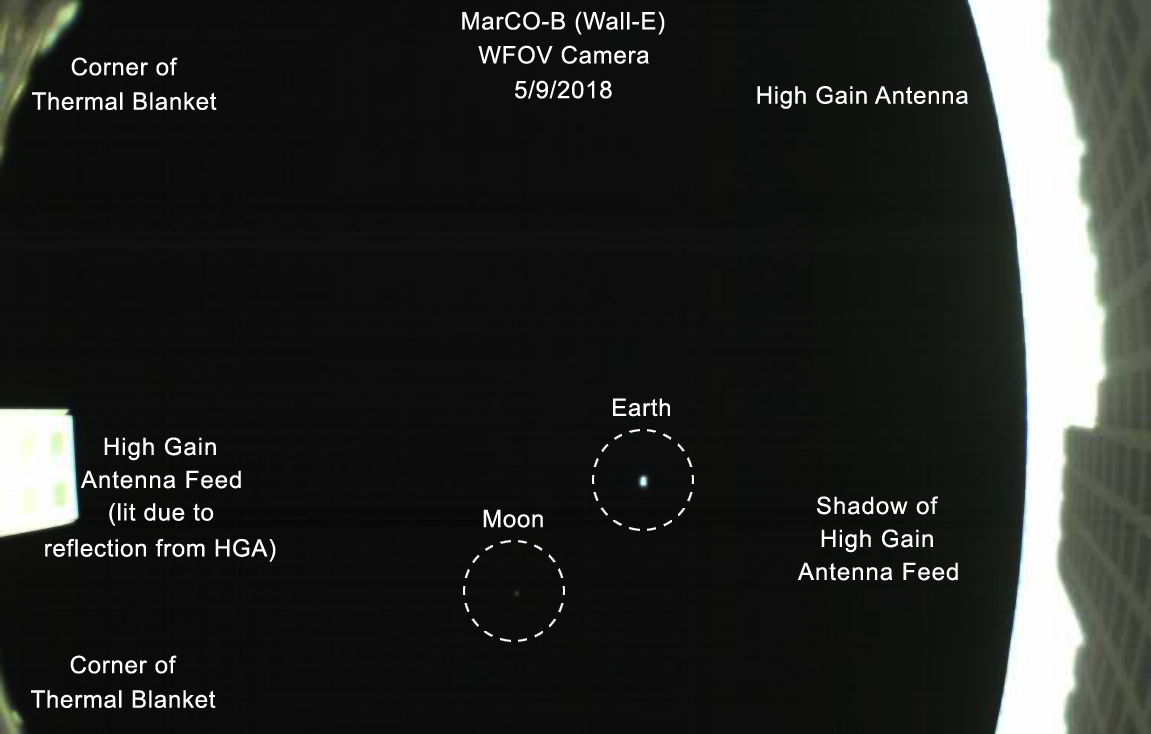INSUBCONTINENT EXCLUSIVE:
The InSight launch earlier this month had a couple of stowaways: a pair of tiny CubeSats that are already the farthest such tiny satellites
have ever been from Earth — by a long shot
And one of them got a chance to snap a picture of their home planet as an homage to the Voyager mission famous &Pale Blue Dot.& It hardly as
amazing a shot as the original, but it still cool.
The CubeSats, named MarCO-A and B, are an experiment to test the suitability of pint-size
craft for exploration of the solar system; previously they have only ever been deployed into orbit.
That changed on May 5, when the InSight
mission took off, with the MarCO twins detaching on a similar trajectory to the geology-focused Mars lander
It wasn&t long before they went farther than any CubeSat has gone before.
Citizen spacecraft builders literally race to the moon in NASA
Cube Quest Challenge
A few days after launch MarCO-A and B were about a million kilometers (621,371 miles) from Earth, and it was time to
unfold its high-gain antenna
A fisheye camera attached to the chassis had an eye on the process and took a picture to send back hometo inform mission control that all
was well.
But as a bonus (though not by accident — very few accidents happen on missions like this), Earth and the moon were in full view
as MarCO-B took its antenna selfie
Here an annotated version of the one above:
&Consider it our homage to Voyager,& said JPL Andy Klesh in a news release
&CubeSats have never gone this far into space before, so it a big milestone
Both our CubeSats are healthy and functioning properly
We&re looking forward to seeing them travel even farther.&
So far it only good news and validation of the idea that cheap CubeSats could
potentially be launched by the dozen to undertake minor science missions at a fraction of the cost of something like InSight.
Don&t expect
any more snapshots from these guys, though
A JPL representative told me the cameras were really only included to make sure the antenna deployed properly
Really any pictures of Mars or other planets probably wouldn&t be worth looking at twice — these are utility cameras with fisheye lenses,
not the special instruments that orbiters use to get those great planetary shots.
The MarCOs will pass by Mars at the same time that InSight
is making its landing, and depending on how things go, they may even be able to pass on a little useful info to mission control while it
Tune in on November 26 for that!

